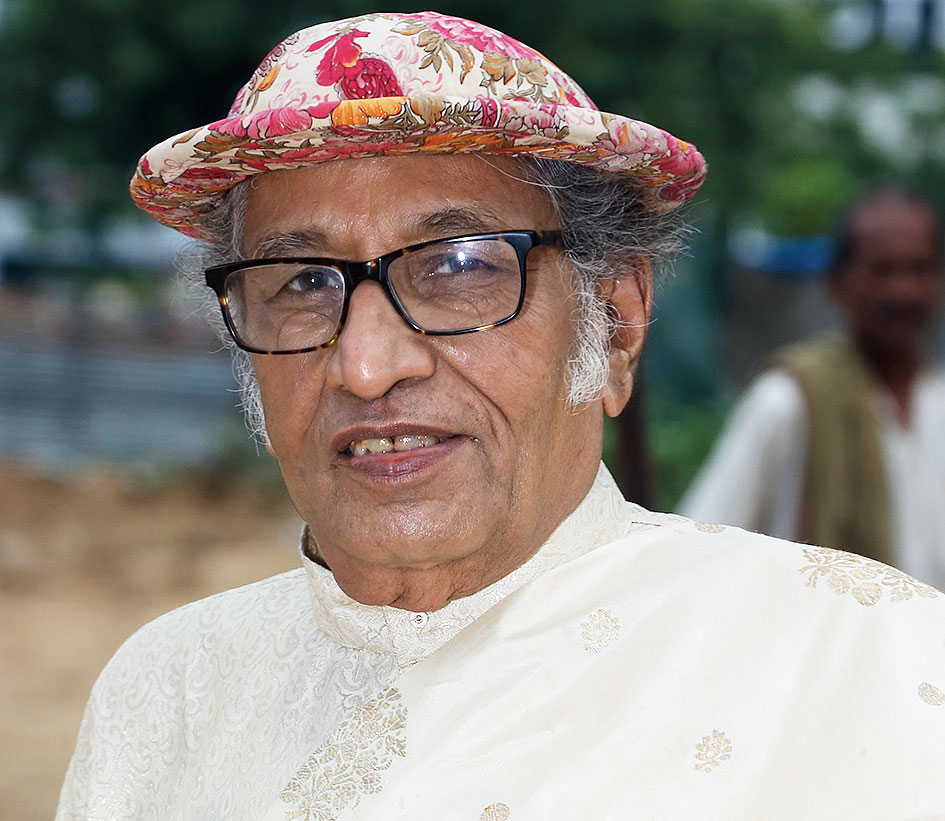Sheherwali means city-dweller. The term “sheherwali” was used to refer to the Oswal Jains who travelled from small towns of Rajasthan in search of business opportunities 300 years ago and finally made Murshidabad their home. “Thereafter, whenever they were asked where they were from (during their travels), they would say ‘sheher se aa rahe hain... we are from the city’. Calcutta did not even exist then,” says Pradip Chopra, president of the Murshidabad Heritage Development Society, which works for the restoration and revival of heritage in Bengal’s Murshidabad district.
“They called themselves sheherwali thereafter, instead of sheherwala, perhaps for the lyrical effect that comes from using the feminine suffix,” says Chopra. The first Sheherwali family to settle down in the area was the family of Manik-chand. Hirachand Galera, Manik-chand’s father, had wanted to leave the arid state of Rajasthan. He left his village, Nagaur, and settled in Patna, which was a major trading hub then and from there, he moved to Dhaka.
Murshid Quli Khan, the first nawab of undivided Bengal, appointed Manikchand his personal banker. According to Bikram Dugar, whose ancestors were among the first wave of Sheherwalis to arrive in Murshi-
dabad, it was Manikchand who encouraged the nawab to leave Dhaka and establish a city bearing his own name. The nawab heeded his bidding, and the city of Makshudabad came to be known as Murshidabad. And then came a time when Manikchand became the royal banker. He was also given the title of “Jagat Seth” or banker of the world.
As his business grew, Manikchand invited a number of Jain merchant families from Rajasthan. Says Chopra, “Most of the Jain merchants visiting these parts were pilgrims to Shikharji, now in Jharkhand, an important Jain pilgrimage.” Some of the oldest Sheherwali families of Murshidabad were the Naulakhas, Singhis, Nahars, Dugars and Shrimals. Of course, today most of them have moved out to different geographies; only about 5,000 Sheherwalis continue to live in Bengal.

Bikram Dugar Sourced by Telegraph
The Sheherwalis settled down on the banks of the Bhagirathi river around Azimganj, Jiaganj, Lalbagh and Cossimbazar. It is said that the combined wealth of the Sheherwalis of Murshidabad was more than the wealth of the British aristocracy.
In the 1914 book titled Murshidabad, L.S.S. O’Malley of the Indian Civil Service quotes from a document wherein commander-in-chief of British India, Robert Clive, writes, “The city of Murshidabad is as extensive, populous and rich as the city of London, with this difference, that there are individuals in the first possessing infinitely greater property than the last city.”
O’Malley notes that the bandit, Mir Habib, looted Jagat Seth of “full two crores”. He also writes, “…so amazing a loss which would distress any monarch in Europe affected him so little…” The book also mentions how in 1866, while the neighbouring districts of Nadia and Burdwan collapsed, there were no casualties reported from Murshidabad and neither did its people seek government relief.

The Kathgola Palace in Murshidabad Anindya Sankar Ray
Dugar, who is in his 70s, is the descendant of one Budh Singh. Chopra says of the Dugar family, “Bikrambabu’s house was bigger and more grand than the Buckingham Palace. It was designed by French and Italian architects. They lived like emperors, not just kings.”
According to Dugar, the Sheherwalis then made their fortunes through moneylending, banking and trade. He uses two adjectives for the community — raeesi (affluence) and nazaqat (sophistication). As if to illustrate his point, he says, “My uncle would never eat the part of the mango he held as it would become slightly soft and soggy.” The Sheherwalis played Holi with saffron and rose water instead of colours; the pichkari and baalti were of pure silver.
Much is always said about the Sheherwalis’ wealth, what remains unsaid is how they mingled with their adoptive home. Chopra points out that the language they speak in is itself a testimony of the mixed heritage — Farsi, Urdu, Rajasthani, Hindi and Bengali. Members of the community built temples and dharamshalas, hospitals and educational institutions. It seems the first girls’ school in Murshidabad was founded by a Sheherwali.
Dugar pauses in his narrative and clarifies that Sheherwalis must not be confused with Marwaris. He says, “Sheherwalis came here and adapted to the culture and embraced the traditions of the new place while keeping their own traditions intact.”










